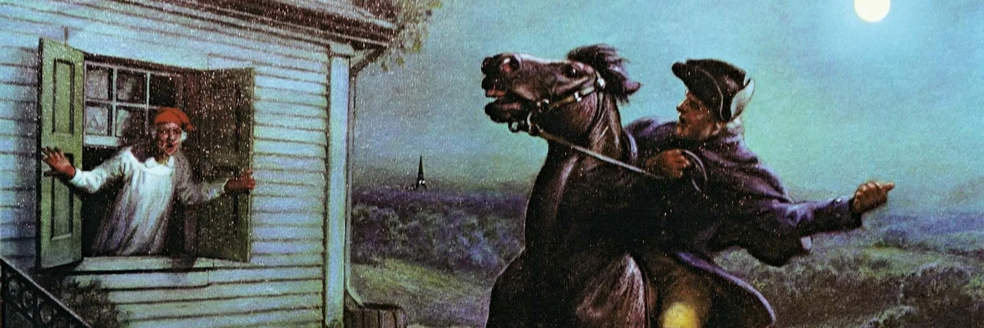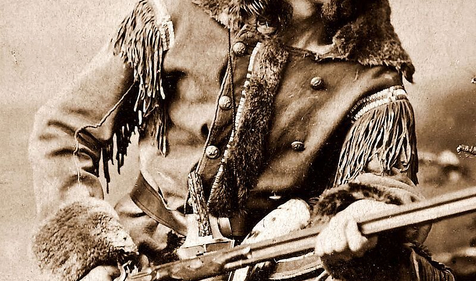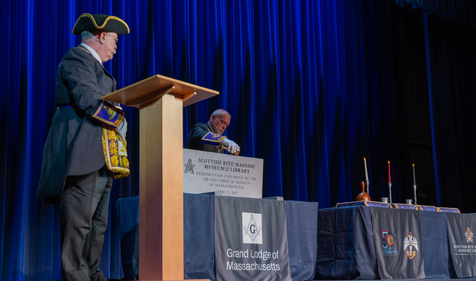Explore the incredible life of Paul Revere - silversmith, militiaman, family man, entrepreneur, and Freemason.
In 1860, the poet Henry Wadsworth Longfellow penned his famous "The Midnight Ride of Paul Revere," forever cementing Revere’s status as one of America’s original and most significant patriots. Paul Revere lived a particularly storied life -- he was a silversmith, an entrepreneur, a militiaman, Freemason, and a family man. His life is intrinsically linked with the formation of the United States thanks to his role in the American Revolution. Not only that, as the second Grand Master of the Grand Lodge of Massachusetts, he also was a prominent figure in the development of early Freemasonry in our nation.
A Boston Youth
Brother Revere was born in the North End of Boston on January 1, 1735. His father was a French Huguenot born Apollos Rivoire. Rivoire arrived in Boston at age 13 and became a silversmith. Deborah Hitchborn, Revere’s mother, was a member of a long-standing Boston family who owned a small shipping wharf. Young Paul was the third of 12 children and the eldest surviving son.
Revere attended school and learned to read and write. At age 13, he became an apprentice to his father. This trade allowed the Reveres to network with all levels of Boston society, forming relationships that influenced Revere's life during the revolution and beyond.
Revere's father passed away in 1754, and despite his expertise as a silversmith, he was legally too young to become the master of the family silver shop. Two years later, Revere enlisted in the provincial army to fight in the French and Indian War, hoping to earn consistent pay. He was commissioned a second lieutenant in an artillery regiment and spent the summer of 1756 at Fort William Henry near Lake George, New York. When he came of age, he returned to Boston and assumed control of his family's silver shop. On August 4, 1757, he married Sarah Orne, and they had eight children together.
A Son of Liberty
Paul Revere’s work at his family's silver shop marked the true beginning of what was to become a long and varied career. Many of the silver works he created, including flatware, bowls, candlesticks, tea sets, and more can be seen on display today. Revere’s shop even cast the first church bell in Boston.


Unfortunately, the economy in Massachusetts suffered following the French and Indian War and the passing of the Stamp Act of 1765. Ever resourceful, Revere took up dentistry to keep afloat. He formed a friendship with one of his clients, Joseph Warren, who, in addition to sharing Revere's political views, was an active member at his same Masonic lodge.
Discontent over the colony's economic difficulties gave way to protests and, in some cases, violent mobs. In 1765, a group of militants called the Sons of Liberty formed, and Revere became a member. Paul began producing engravings depicting political themes on behalf of The Sons of Liberty, including a famous image of The Boston Massacre, which occurred in March 1770.

In 1770, Revere purchased the house that today still stands as a museum in Boston's North End. Here, he housed his growing family while working at his nearby shop. Sadly, Sarah died three years later. Revere then married Rachel Walker, and together they had eight children.
As tensions between the revolutionaries and British colonists grew, Paul Revere acted as an invaluable link within the community. He connected artisans and intellectuals, uniting them in common cause. In 1773, he participated in the Boston Tea Party, a now legendary protest decrying parliamentary taxation without representation.
An American Revolutionary
On the night of April 18, 1775, Brother Joseph Warren instructed Revere to ride to Lexington and alert John Hancock and Samuel Adams of the British incursion. He planned his famous signal to warn of the British approach: lanterns placed in Boston's Old North Church steeple: "One if by land, and two if by sea."
Revere's warning made it possible for the Minutemen to prepare and arrive on Lexington Green for the first battle of the American Revolution. With the Battles of Lexington and Concord fought and the Siege of Boston underway, the Revere family moved out of the city, and he started formally working for the colonial government and army.
A touching story of Brotherly love during the war came in the wake of Revere's friend and fellow Freemason Joseph Warren's death on the battlefield. Brother Warren died in the Battle of Bunker Hill on June 17, 1775, and was buried in an unmarked grave. After the British army left Boston nearly a year later, Revere uncovered a battlefield grave containing two bodies. Identifying Warren's body from a false tooth he had prepared for his friend, Revere then arranged a proper funeral.
During the war, Revere was a lieutenant colonel in the Massachusetts State Train of Artillery and commander of Castle Island in Boston Harbor. His military service was unremarkable, with his troops encountering little fighting during the war. However, Revere saw the army as his opportunity to raise his social status. In 1779, he was appointed field artillery commander in a multi-colony expedition dispatched to what is now the state of Maine. The mission was fruitless thanks to disorganization and conflict between the naval and land forces. It marked an unceremonious end to Revere's military career, and he returned to Boston to resume his business endeavors.

Late Life and Legacy
Revere resumed his stride as a successful industrialist after the war and set up a rolling mill for the manufacture of sheet copper in Canton, Massachusetts. From this factory came sheathing for many U.S. ships, including the USS Constitution, and for the dome of the Massachusetts State House. The foundry survived into the 21st century as Revere Copper Products, Inc.
Revere retired in 1811 at 76, leaving his well-established copper business to his son Joseph Warren Revere. He passed away on May 10, 1818, as a successful businessman, popular local figure, and most of all, a courageous, steadfast American patriot.

The copper works business Revere founded in 1801 remains active today as the Revere Copper Company. Many of the original silverware, engravings, and other works he crafted can be seen in museums such as the Museum of Fine Arts in Boston and the Metropolitan Museum of Art in New York City, as well as our own Scottish Rite Masonic Museum & Library.
As a special feature of their latest exhibition: The Masonic Hall of Fame: Extraordinary Freemasons in American History, the Museum is displaying six jewels thought to have been made by Paul Revere for Bristol Lodge around 1797.

Most Worshipful Brother Paul Revere
No synopsis of Paul Revere’s life would be complete without explaining the significance of his time in Freemasonry. He entered the fraternity in 1760 when he was 25, joining St. Andrew's Lodge, chartered in 1756 by the Grand Lodge of Scotland. Revere took quickly to the Craft, serving as a lodge officer and maintaining an active Masonic membership for nearly 40 years. Between 1762 and 1797, there were only four years when Revere was not holding one or more Masonic offices.
In 1792, Revere facilitated a merger between the two Grand Lodges in Boston, representing Ancient and Modern Freemasonry. He became the second Grand Master of the Grand Lodge of Massachusetts, where his portrait hangs to this day. Most Worshipful Brother Paul Revere served a three-year term, during which he chartered 23 lodges. In a speech made to fellow Freemasons in 1797, Paul Revere claimed that serving as Grand Master was the "greatest happiness" of his life.

The Scottish Rite Masonic Museum & Library’s Masonic Hall of Fame exhibition honors Masons, both past and present, who have made outstanding contributions to American history. In 2022, Brother Paul Revere was inducted into the Masonic Hall of Fame alongside four other notable Freemasons. Learn more about the exhibition and view all the Masonic Hall of Fame inductees online.
Related Stories
Discover additional Scottish Rite blogs and news on this topic.
-
William “Buffalo Bill” Cody
History
Read More about William “Buffalo Bill” Cody
-
A Historic Gathering: 50th Anniversary of the Scottish Rite Masonic Museum & Library
News
Read More about A Historic Gathering: 50th Anniversary of the Scottish Rite Masonic Museum & Library
-
Theodore Roosevelt: Freemason, President, and American Icon
Famous Masons
Read More about Theodore Roosevelt: Freemason, President, and American Icon



